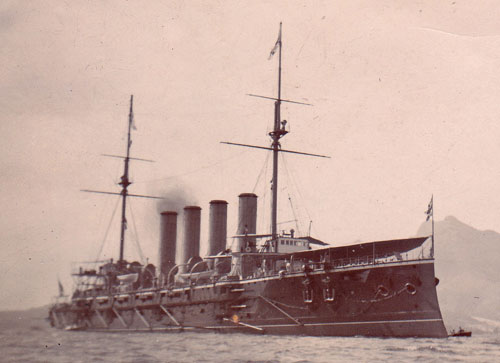Today was mostly about a Scottish shipyard at Fairfield Farm. It was on the banks of the Clyde, at Govan, not far from Glasgow, and produced all manner of ships.
The business really started off in 1834, as Randolph, Elliott & Co then, following the death of Elliott and the arrival of John Elder, Randolph, Elder & Co.
Initially, Charles Randolph, a millwright, made engines and machinery closer to Glasgow but when John Elder joined, they decided to move into ships. For this, they needed water so they moved the business to the Govan area of the Clyde.
When Randolph died, John renamed the company John Elder & Co and it still flourished.
At some point, William Pearce (eventually a ‘sir’) joined and, when John Elder died, was the sole owner. He moved the business to Fairfields Farm, renamed it Fairfields Shipbuilding and Engineering Company and made it the greatest shipbuilding yard on the Clyde
One of the problems I had was working out when it became a limited liability company. I had conflicting dates – one source said 1885 while, on Companies House, it was first incorporated in 1889. This conflict led me to scour the Times archive, looking for any reports on the company. There was a lot.
Eventually I uncovered the truth. Both dates were correct.
In 1885, the company became incorporated as a private company with limited liability. Upon Sir William’s death, the company was floated on the stock exchange, becoming a public company, in 1889. In fact, the announcement in the Times contained some valuable historical data about the evolution of Fairfields.
Fairfields (as it was always known) made ships for the British Navy, cruise companies like P&O and Cunards, foreign shipping companies, foreign navies…you name it. For a long time, they ruled the docks.
They even had a hand in the development of Egyptian tourism by building Nile cruisers for Thomas Cook.
But, as happened to them all, Fairfields was eventually no more. In 1968, it no longer existed, the yards, docks and machinery having become part of the Upper Clyde Shipbuilders.
By the end it was divided into lots of different companies, all prefixed Fairfields but it was never as successful as it was in the late 19th and early 20th century.
And this is the reason I was researching Fairfields. This is a scan of a photograph in the technical file. It is HMS Diadem, built at Fairfields in 1896. A fine ship.




VERY GOOD, LEARNING A LOT ABOUT SHIPS.
LOVE MUM X